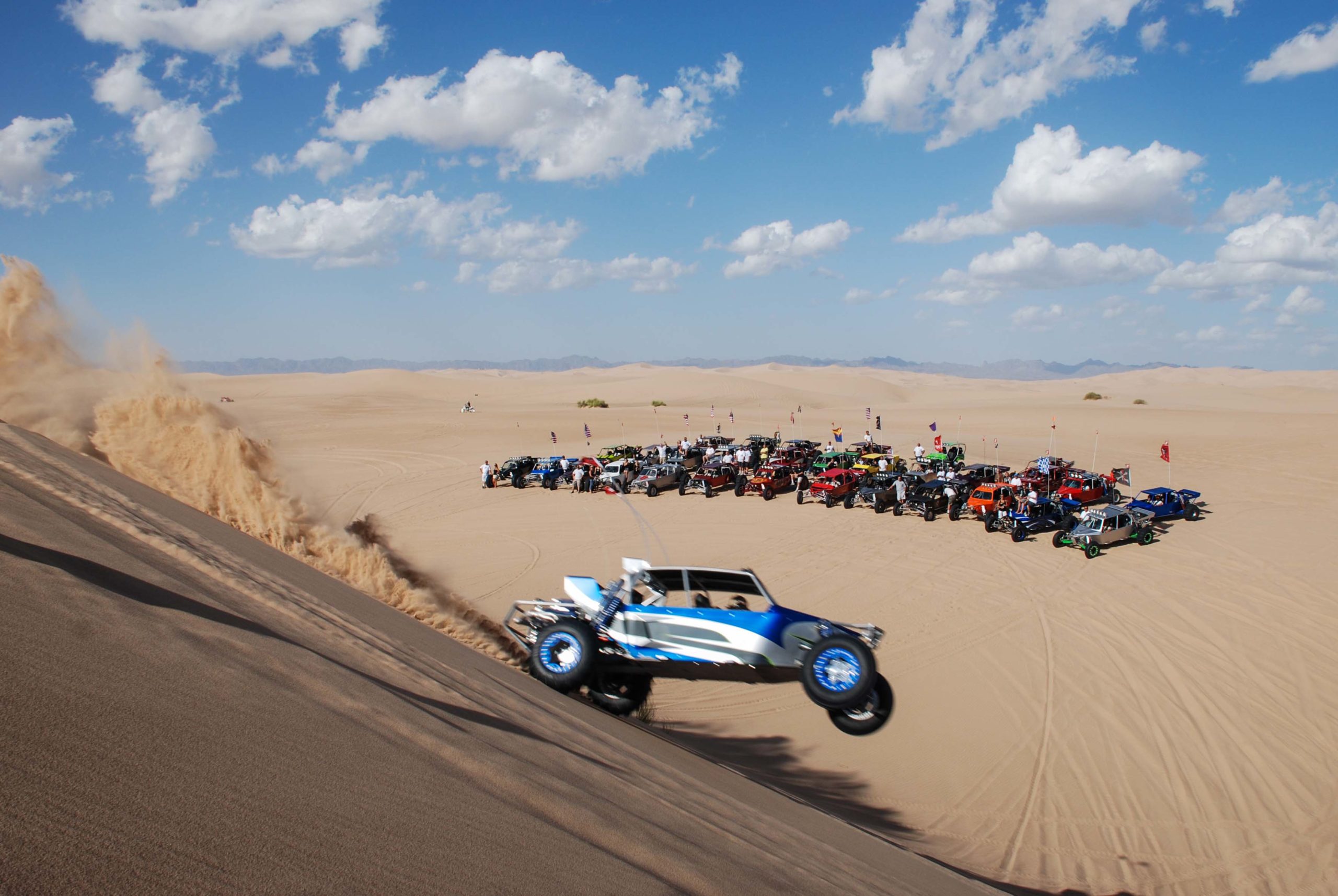
Ride the best sand dunes on the West Coast — all in one trip!
Story & Photography by Casey Cordeiro
Story form the 2018 Gear Guide
When was the last time you took your family on an “Ultimate Adventure”? Where did you go? Did you venture out to a new destination or stick with one of your family’s favorites? To switch it up and explore the wide world of sand, we wanted to showcase our top 10 sand dunes destinations in this Ultimate Sand-Slingin’ Road Trip, which starts in the Southwest region of the United States and traverses many of the Western states. Along the way we’ll visit a lifetime supply — or at least an epic vacation’s worth — of premier sand-dune locations. Not only are there phenomenal sand-dune riding spots on this route; there are also some amazing sights to see along the way. We could extend this trip a couple of days and see even more, but for now we’ll keep it simple by showcasing the riding location and some of our favorite points of interest nearby to each of them. Buckle up and let’s roll!
Notes for all locations: Always wear a helmet and proper riding gear. Unless otherwise noted, dogs are allowed at all of these spots as long as they are leashed and under control. Also unless otherwise noted, these locations are open year-round.
Stop #1: Dumont Dunes OHV Area (California)
Dumont Dunes OHV Area
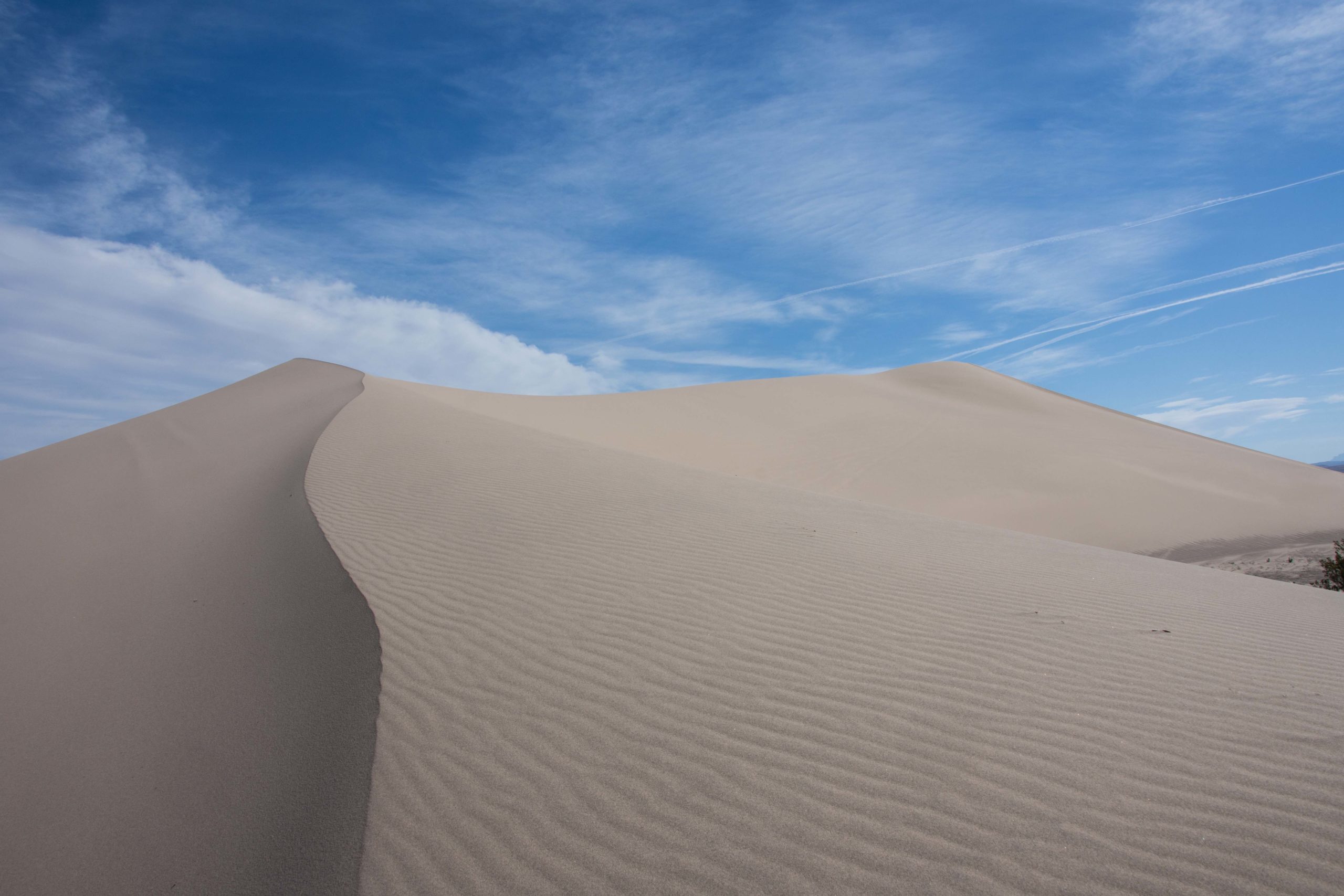
To kick this sand adventure off, we present one of the most iconic sand-riding locations on the planet. Known for its steep dunes and variety of terrain, Dumont is a great place to take your family and friends on a dune adventure. Camping is open and easily accessible just off the dirt-road entrance. Paying the required fee gives you access to the whole area. Once you’re in, you’re free to rip around on all of the open spaces. The big bowls, steep climbs and flowing transitions keep the fun factor high at this unique and desolate off-road oasis.
One of the best things about Dumont is that you can enjoy dirt trails in the surrounding desert terrain — that is if you bring dirt tires as well as paddles. Sticking to the sand portions of the area, paddle tires are recommended because the steep dunes have a tendency to eat up a lot of horsepower. As they say, it’s “the more the better” out here in terms of your machine’s power output.
The Details
•Latitude/Longitude: 35.6833º N, 116.2195º W
•*Fees: Buy an annual permit ($90 non-holiday, $120 with holidays) or a weekly permit ($30 non-holiday, $40 with holidays).
•Open riding area: 8,150 acres, comprised of small and big dunes with options to fit all skill levels
•Landmarks to visit: North Pole, Banshee Hill, Superbowl
Stop #2: Logandale Trails System (Nevada)
Logandale Trails System
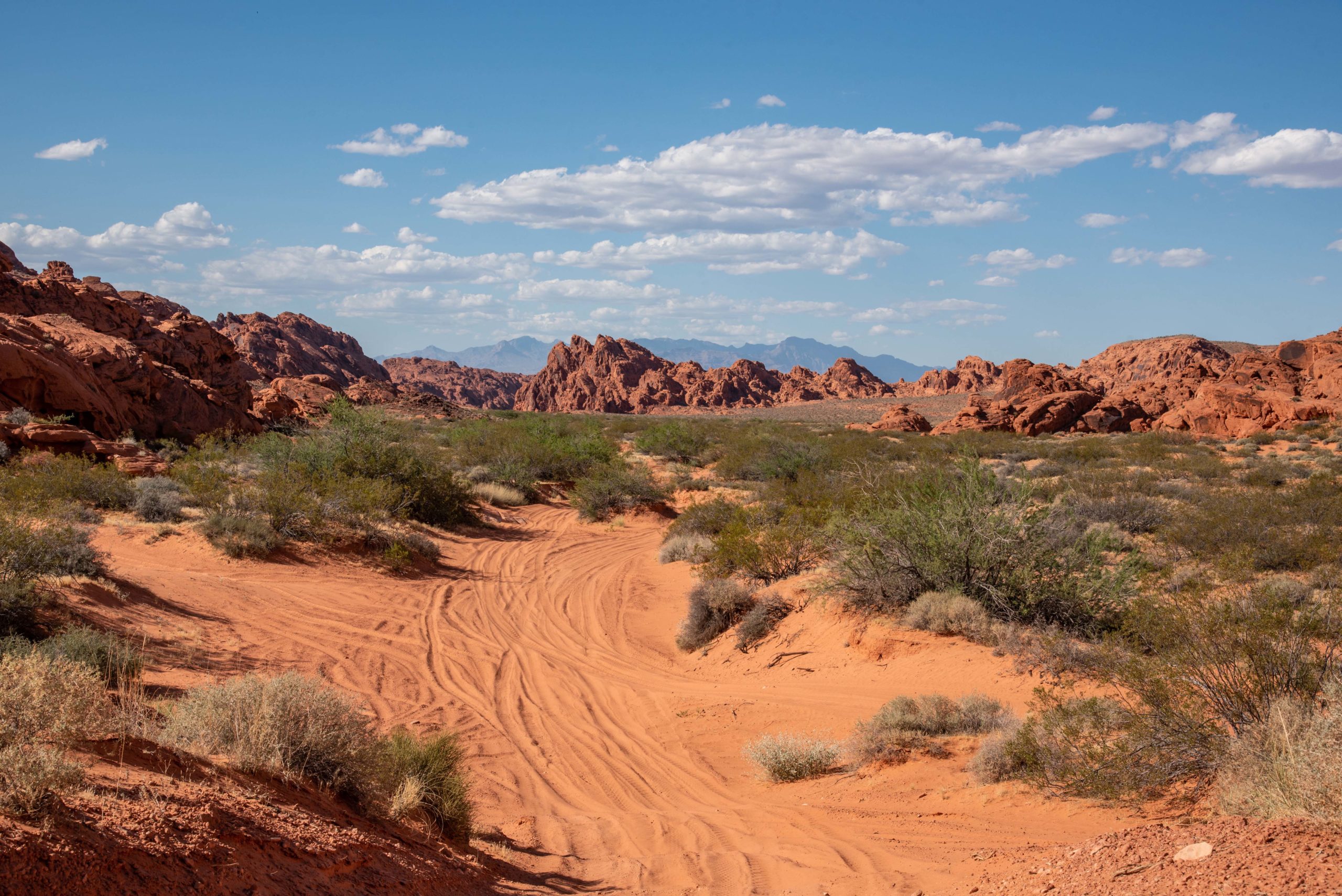
Anyone looking to explore a unique and scenic sand-dune riding area — it’ll remind you of pictures you’ve seen of Mars — should venture out to the Logandale Trails System located adjacent to (and partially within) Valley of Fire State Park in Logandale, Nevada. The town of Logandale is located about 45 minutes northeast of Las Vegas, just south of I-15, and it welcomes all visitors passing through to this riding area. There are gas and grocery options there, but we still recommend stopping in Vegas to fill up on all of the essentials because local supplies could be limited.
The terrain here isn’t too challenging, so don’t expect the steep dunes and wide-open bowls that comprise Dumont. However, the scenery is worth a stop here, at least for one night on this Ultimate Sand-Slingin’ Adventure. If you venture out to the petroglyph site (within the riding area), enjoy it, but treat it with respect by leaving the artifacts in place and not climbing on the rock art. This is a unique feature within Logandale that should be preserved for all to enjoy for many years.
The Details
•Latitude/Longitude: 36.5934º N, 114.5268º W
•*Fees: None
•Open riding area: approximately 200 miles of trails
•Landmarks to visit: There are petroglyphs scattered in the riding area; please observe them but leave them undisturbed.
Stop #3: Sand Hollow State Park
(Utah)
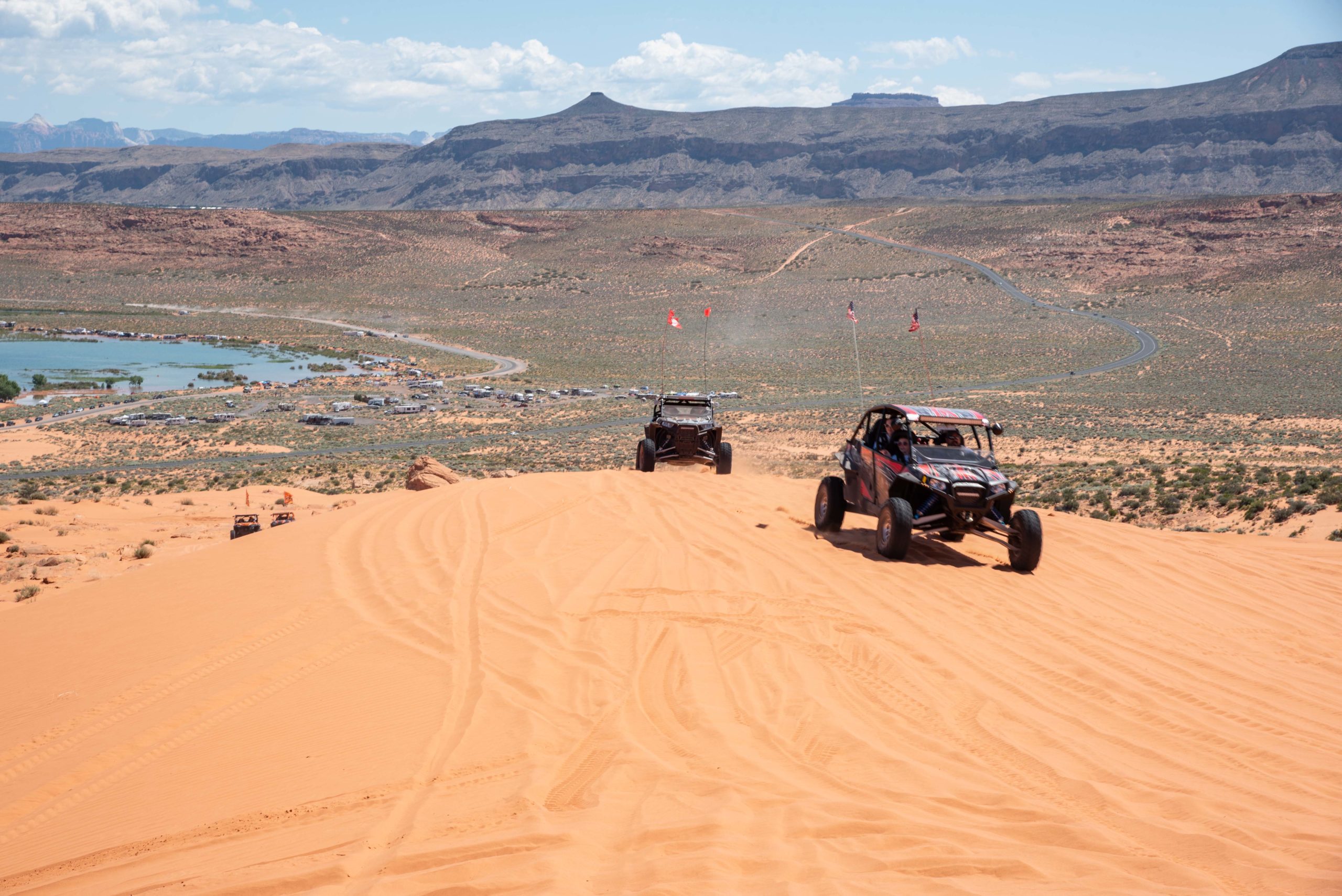
The drive from Logandale to Sand Hollow gives you a glimpse of the scenery offered in Utah. Once you exit the I-15 freeway, the route to Sand Hollow gets you off the main highway and headed toward the beautiful landscapes adjacent to Zion National Park.
Sand Hollow has one of the best mixes of terrain anywhere. You can be slinging sand one minute and then rock-crawling on the grippy sandstone the next. Again, bringing dirt tires might be a good idea here if you like to challenge your driving ability and machine on Moab-like trails.
Another thing that makes this place unique and such a popular riding area is the fact that you can bring your boat. Yes, you read that right! Camping for this area is actually located on the beach at Sand Hollow Reservoir. You can park your side-by-side right next to your boat if you want. Summer visitors enjoy hot weather here, with temperatures sometimes reaching into the 100s, perfect for riding the sand in the morning and boating in the afternoons.
The Details
•Latitude/Longitude: 37.1200º N, 113.3820º W
•*Fees: Day-use passes are $15 per vehicle per day (up to 8 people), and an annual pass is $100. Camping permits vary by area. Primitive camping is $25 per vehicle per night. Sandpit Campground: Partial hookup sites are $35 per night (limit 2 vehicles); no-hookup sites are $28 per night (limit 2 vehicles); and no-hookup group sites are $95 for the first four vehicles (additional fees for five to 16 vehicles).
•Open riding area: 6,000 OHV acres
•Landmarks to visit: The beach! There are also many technical trails to ride in this area.
Stop #4: Coral Pink Sand Dunes State Park (Utah)
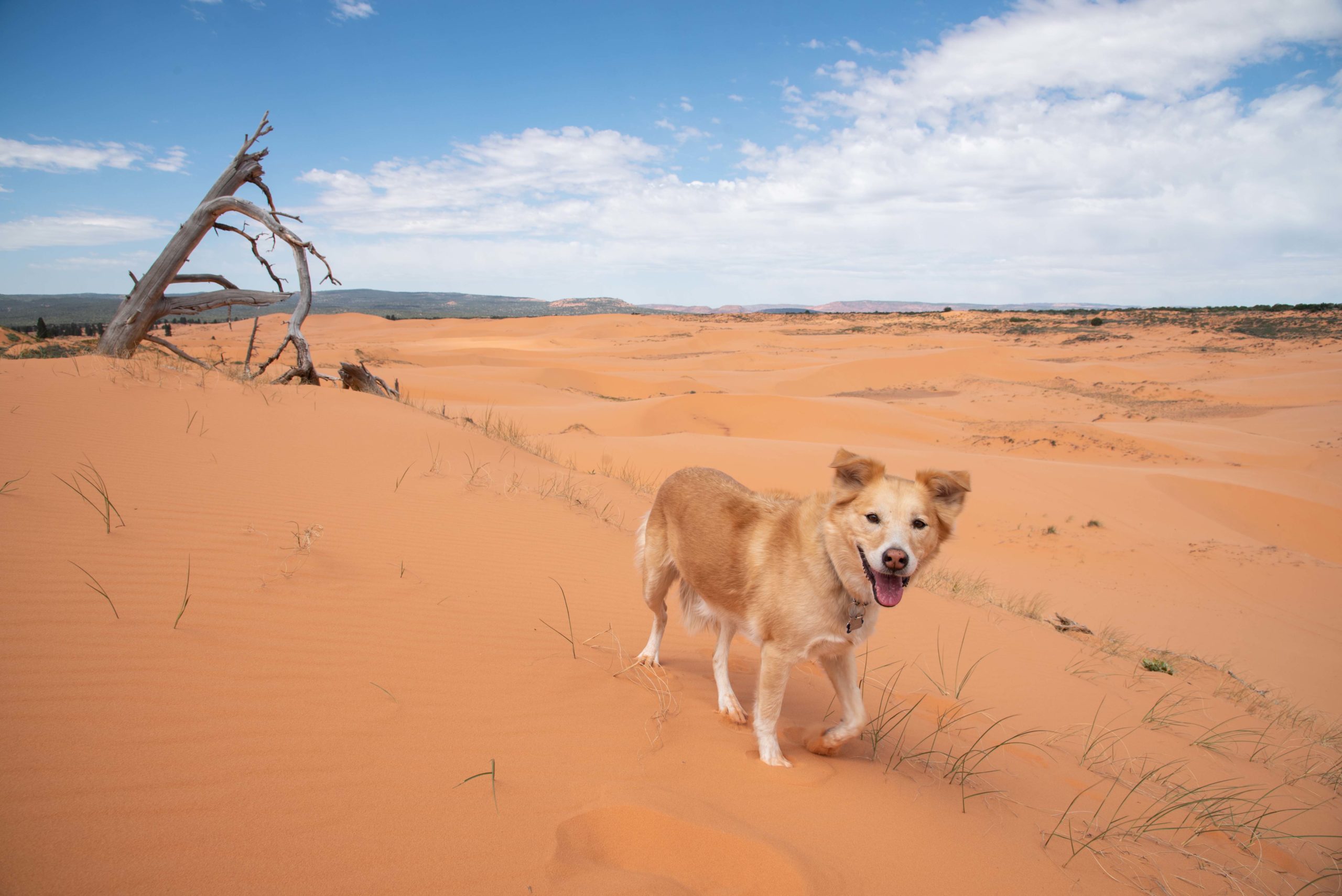
Here’s the bottom line with Coral Pink — it’s a great sand-dune spot with plenty of open dunes, steep climbs and tree-lined sandy trails, but the real magic lies in the trail system that surrounds the park. These trails are still all sand, and you’ll see the magic when you venture out to destinations like the backside of Zion, Dinosaur Tracks and many more. The dunes and trails provide an amazing experience for beginners and advanced drivers alike. However, the sand can be surprising soft — bring your horsepower!
Full hookups are available in the main campground, which costs $20 per single campsite and $40 for the double sites. It is recommended that you make reservations well in advance of your trip if you want to stay in the campground, but if you want to dry camp, there are plenty of places to do so. The northern end of the dunes has the open camping area known as Meadows Campground. Or head south past the main campground, and the area opens up with primitive camping. 4WD is needed in most if not all of these primitive areas. And more than at almost any other sand-dune location, the pink sand here is beautiful but also extremely soft. Keep the soft sand in mind when you are traversing the dunes — obstacles can sneak up on you.
If you have an extra day or two, it’s highly recommended that you pass through Zion National Park and Bryce Canyon. Stay at Ruby’s Inn for a night (or two) and explore the national park. If you have your dirt tires, this is another epic place to go riding!
The Details:
•Latitude/Longitude: 37.0672º N, 112.7046º W
•*Fees: $10 per vehicle, Old Campground $25 per single site, $50 for double sites, New Campground (water & electric/Sites 23-34): $40 per site
•Open riding area: more than 1,500 acres of dunes
•Landmarks to visit: Dinosaur Tracks
Stop #5: Little Sahara Recreation Area (Utah)
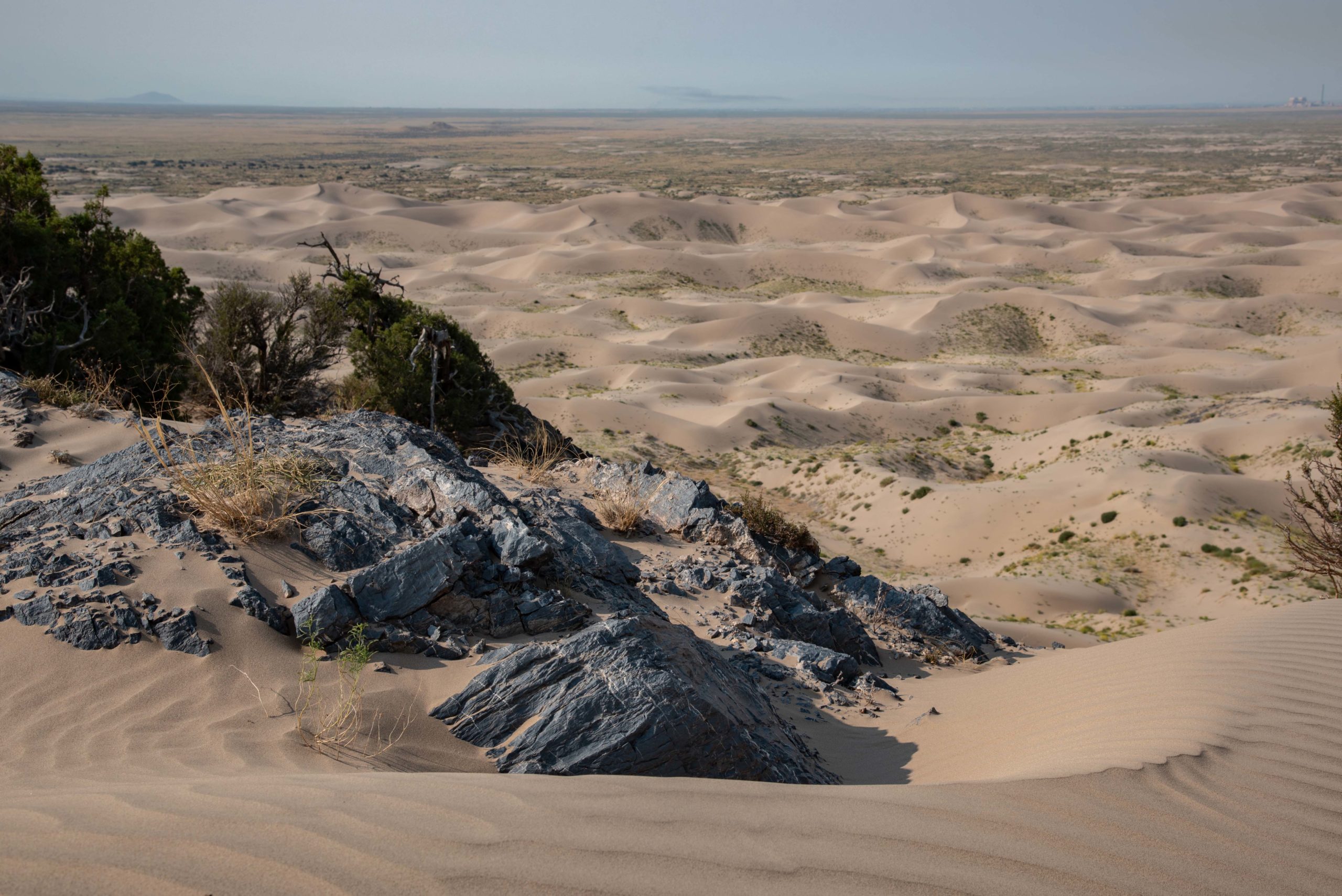
With 60,000 acres of open riding area, how could you go wrong visiting this sand-dune locale? Truth be told, there is a little bit of everything here. Little dunes that stretch for miles are perfect for letting kids or newbies hone their skills. The big bowls on the back of Sand Mountain appeal to those seeking epic roller-coaster-style rides. And yeah, how about the massive hill called Sand Mountain?! It is exactly as its name describes, a 700-plus-foot-tall dune that provides one of the ultimate horsepower tests in the United States. Don’t worry, though, if you just want to get to the big dunes, there are trails around the mountain that take you to the big bowls without climbing the monster.
Flowing bowls, big jumps and open riding space characterize the backside of the mountain. While there aren’t endless flowing dunes here like you’ll find at Glamis, Little Sahara is a unique and extremely fun place to ride. Several developed campgrounds dot the area and offer hard-packed spots for larger rigs. Our personal favorite camping spot has to be the open camping right under Sand Mountain. This area can definitely fill up on major holiday weekends, so plan accordingly. Overall, this is one of the best areas in the country for riding because of its variety of terrain and wide-open spaces, which makes it great for all types of vehicles and riders.
The Details
•Latitude/Longitude: 39.4356º N, 112.1844º W
•*Fees: $18 per vehicle per day, $120 annual permit, $60 annual permit for seniors and people with disabilities
•Open riding area: 60,000 acres
•Landmarks to visit: Sand Mountain, large kid-friendly sandboxes at White Sands Campground and Jericho Picnic Area
Stop #6: St. Anthony Sand Dunes
(Idaho)
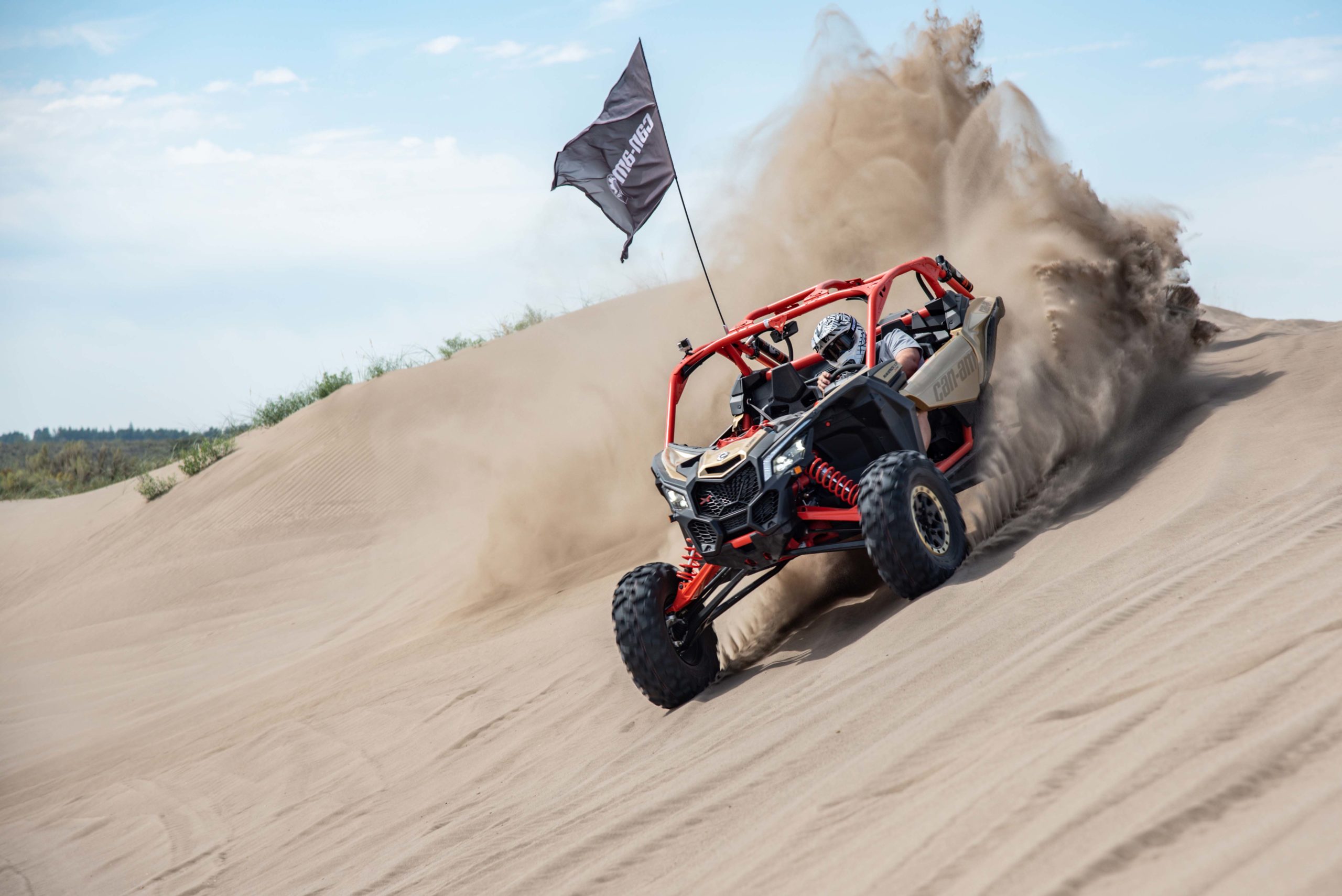
It might only be about 10,600 acres, but the sheer size of the dunes at St. Anthony are enough to make you think this famous location is larger than life. Famous for the massive bowls, steep hill climbs, and lava rock that can sometimes sneak up on riders in the small dunes, St. Anthony is one of the most visited riding locations in the Western states. If you have a passion for the sand, you need to come here.
Besides the massive dunes and endless hill climbs, the area is filled with wildlife and amazing sights, like Egin Lakes, which is nestled adjacent to the dunes. This year-round lake is an awesome place to hang out (vehicles are prohibited in the water) and enjoy a refreshing swim after a day of duning. The Egin Lakes Campground, which is BLM-run and the closest camping to the big dunes, sits right next to the lake. There are two other campgrounds, both of which offer full hookups and amenities for campers. Idaho Dunes RV is possibly the best-known, hosting many events throughout the summer and riding months, with primitive camping also available. Sand Hills Resort is farther out from the big dunes, but they have nice shaded sites available.
A side trip to Yellowstone National Park is not out of the question here; plan accordingly and be prepared to travel some desolate back roads. Visiting our nation’s first national park is well worth the trip!
Please note, the “big dunes” east of Egin Lakes are closed from January 1 to sunrise on April 1. The small dunes east of Egin Lakes are open all year, but be aware that they are likely to be covered in snow in wintertime.
The Details
•Latitude/Longitude: 44.0037º N, 111.7950º W
•*Fees: Day Use Fees: $5.00 per vehicle/per day or there is a $60.00 season pass. Depends on which campground you choose. Reservations are recommended at Idaho Dunes RV (idahodunesrv.com) and Sand Hills Resort (sandhillsresortrv.com).
•Open riding area: 10,600 acres
•Landmarks to visit: Dead Horse Bowl, Choke Cherry Hill, Egin Lakes
Stop #7: Christmas Valley Sand Dunes (Oregon)
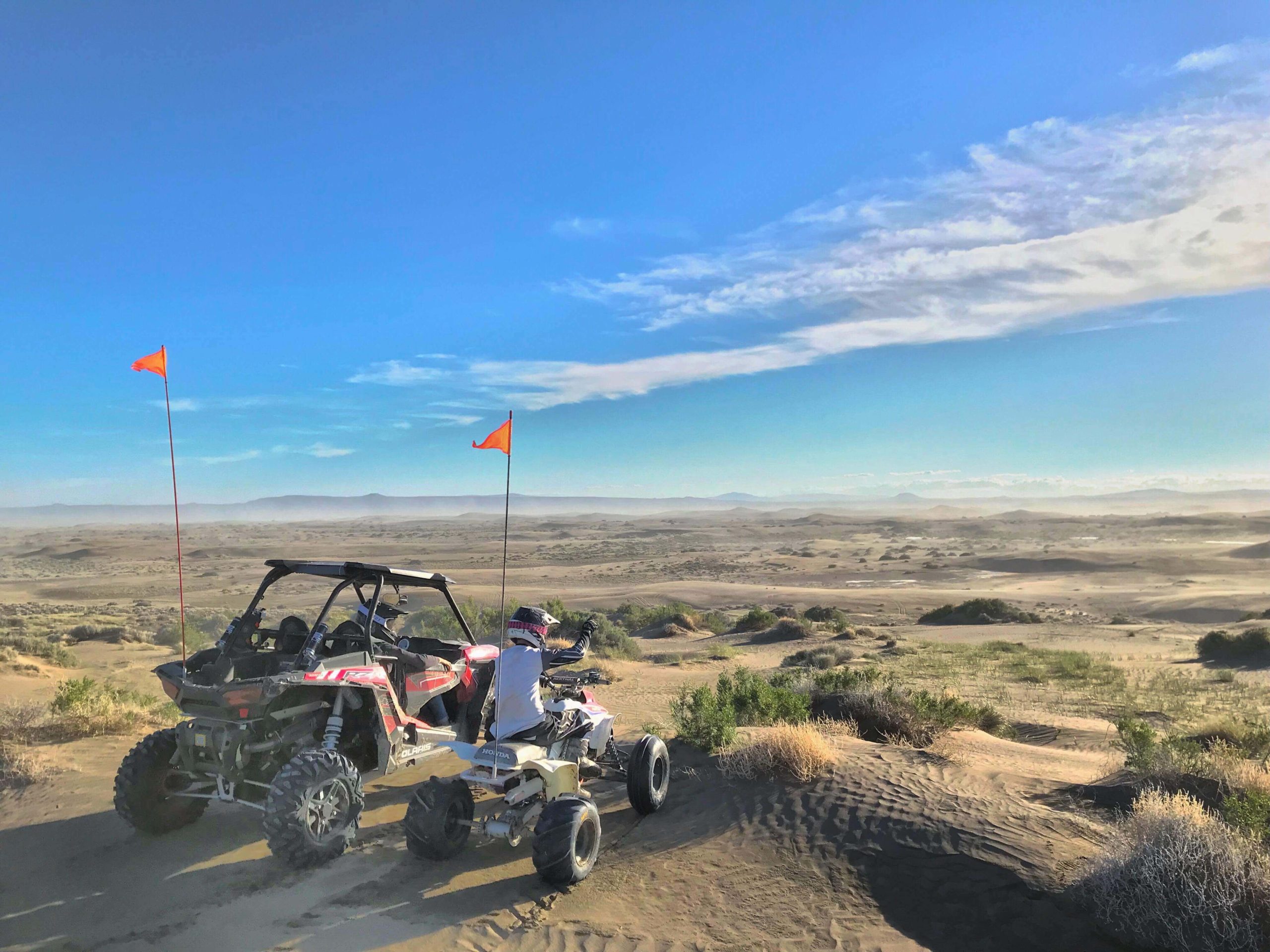
The Christmas Valley Sand Dunes are probably the least known dunes on this top-10 list, but they are as fun to ride as any. They’re located in a remote part of Oregon on your way from St. Anthony to Oregon Dunes on the coast.
There are 8,900 acres of open sand dunes ready for your riding enjoyment, and the dunes snake around some great natural areas. Some of these areas are closed to motorized use, including the adjacent private properties, but everything is clearly marked. This area can get dusty in the summertime, but it’s a great place to ride some medium-size dunes.
One of the area’s unique features is an ancient grove of ponderosa pines growing out of the northeast portion. Motorized vehicles are allowed through the forest on routes that are designated “open.”
The Details
•Latitude/Longitude: 43.2138º N, 120.2226º W
•*Fees: None
•Open riding area: 8,900 acres
•Landmarks to visit: Designated OHV routes through the ancient ponderosa pine forest
Stop #8: Oregon Dunes National Recreation Area (Oregon)
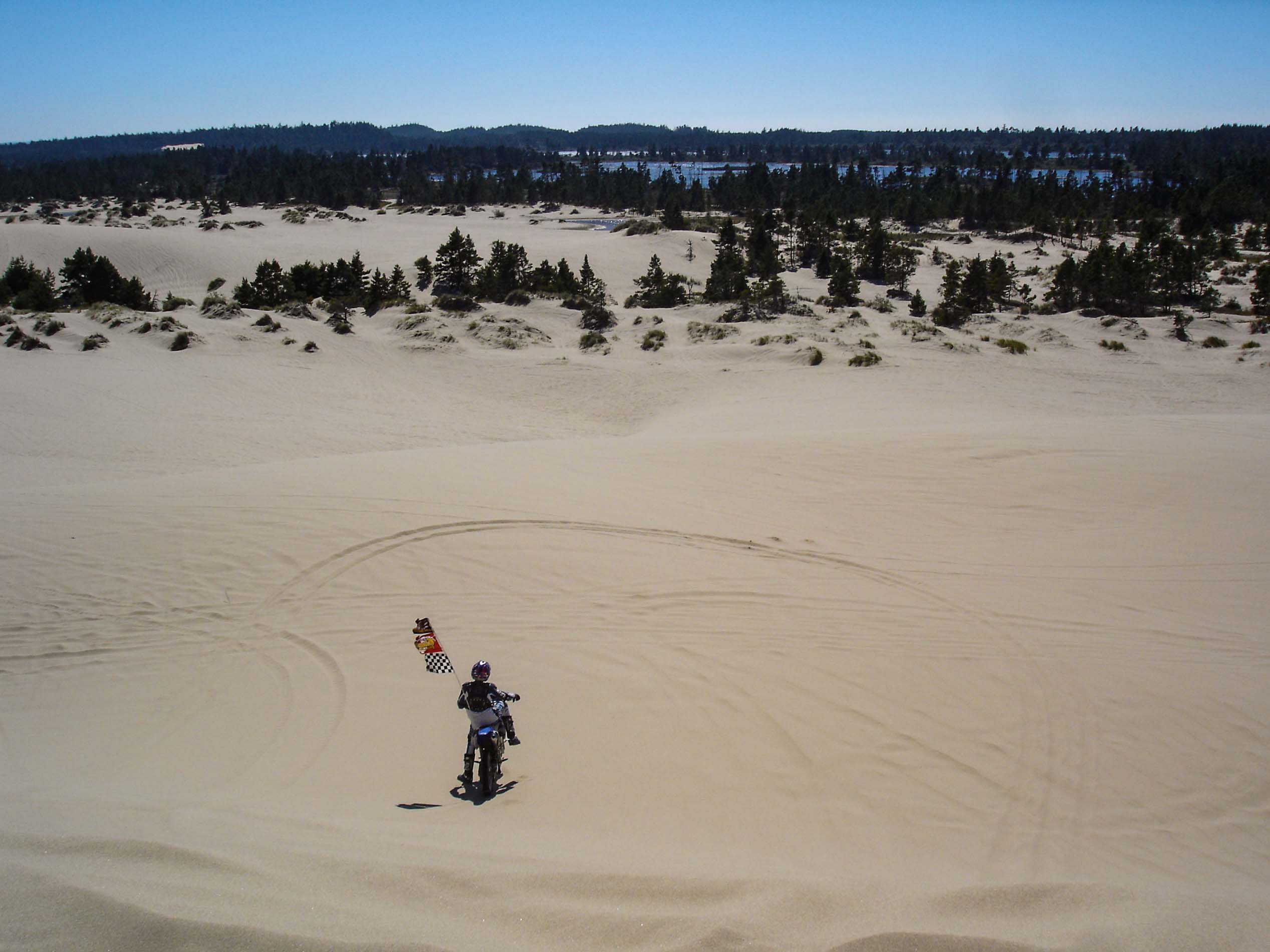
Broken up into three main riding areas — Coos Bay on the south side, Winchester Bay (Umpqua) in the middle section and Florence in the northernmost section — Oregon Dunes comprise 40 miles of coastline and include large dunes, flowing bowls, and some of the best two-track sand trails you’ll ever ride in your life. What makes them great? The tracks snake through the tall trees to create epic adventures. Just be careful — blind crests and corners sometimes limit vision. Always be on the lookout for other vehicles.
Most of the trails are in the Coos Bay riding area, with a good number of open dunes mixed in. A more vast expanse of open dunes can be found in the Winchester Bay area, which has massive hill climbs reaching up to 500 feet tall. The northern dunes of Florence are the medium-size dunes of the bunch. The beach in Florence is open to riding, which is also true in Coos Bay but not in Winchester Bay. A short trip to each of the three sections is highly recommended, even though you’ll have to pack up to get to each of them.
The things that keeps you smiling when you’re here are the great dune formations, amazing riding, and epic ocean and forest views. This riding area might not have the big bowls like some of the others, but these three spots are so remarkable that you’ll keep coming back for more.
The Details
•Latitude/Longitude: 43.7097º N, 124.1790º W
•*Fees: Depends on the campground you choose.
•Open riding area: 31,186 acres broken up into the three areas
•Landmarks to visit: The beach! Also, riding next to lakes and trees is a thing of beauty — take it all in.
Stop #9: Oceano Dunes State Vehicular Recreation Area (California)
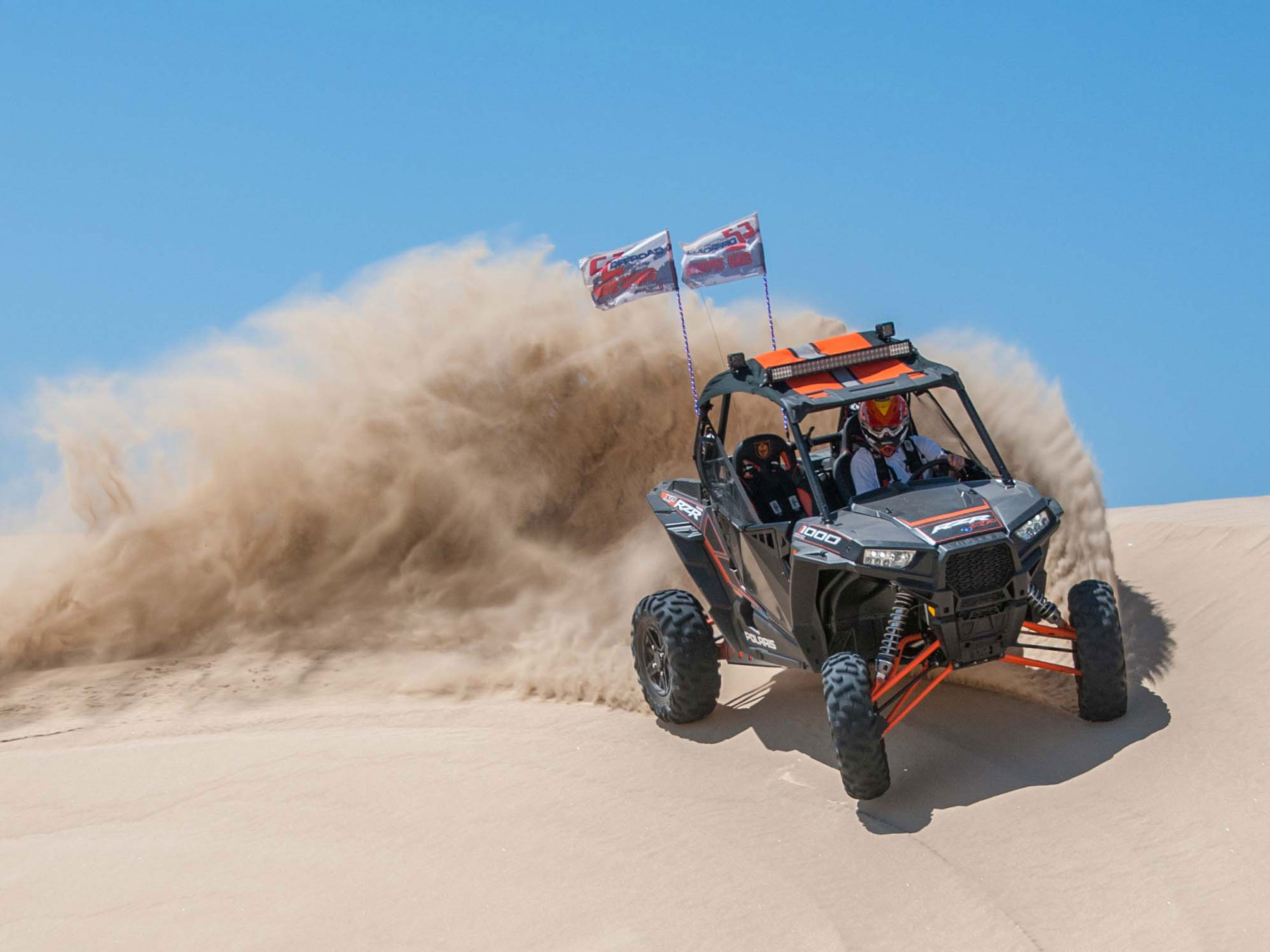
Let’s keep with the coastal sand-dune theme going, shall we? On your way back to Southern California from the Oregon Coast, you’ll enjoy a long drive where you should visit Lake Shasta, the beautiful California redwood forests, Yosemite National Park, and of course the California state capital. If you don’t get stuck in wine country, you’ll make it south past Paso Robles to Oceano Dunes, where another set of sand dunes sits right on the Pacific Ocean.
Oceano, commonly known as Pismo, is regarded as one of the best beach OHV areas because of its open expanses. It might not be the largest dune field on the planet, but it is extremely fun to camp on the beach and enjoy some great riding. Don’t expect massive climbs or big bowls — the dunes here are fairly mellow. However, experienced and newbie drivers will have a blast because of the varying terrain, which includes jumps, moderate climbs and the all-important ocean water right outside your camper door.
Note that the open camping area is actually in the sand right along the beach. The state-park office checks you in and should warn you about tide levels (we suggest checking the tides before you go). The sand is notoriously soft just off the main beach area, but plenty of savvy motorhome drivers still park in this area regardless. If you are inexperienced with driving your portable home in the sand, we suggest going with an experienced group your first time to Pismo. The drive on the beach isn’t short — it’s approximately 1 mile down to where the camping starts south of Pole 2 — but the sand is typically pretty packed along the water.
The Details
•Latitude/longitude: 35.1103° N, 120.6327° W
•*Fees: $5 Day use pass, $10 per night for camping
•Open riding area: Approximately 1,100 acres
•Landmarks to visit: The beach!
Stop #10: Imperial Sand Dunes National Recreation Area (California)

Last but not least on this Ultimate Sand-Slingin’ Road Trip, we highly suggest that you finish everything off by visiting the most famous dune location in the United States, namely the Glamis Dunes. It’s known as the “duner capital of the world” for good reason. More than 150,000 acres of sand-dune madness, with endless bowls and hill climbs, lie ready for you to unleash all of your horsepower. The entire Imperial Sand Dunes Recreation Area system encompasses the following areas: Glamis, Buttercup Dunes, Ogilby and Gordons Well.
The true magic of Glamis, setting it apart from everywhere else, is the mass abundance of bowls and flowing dunes. You can go on a three-hour roller-coaster ride and never see the same dune twice. The only problem you’ll have will be keeping enough fuel in your tank to keep the ride going. Constantly shifting sands make this dune field better all the time. Whether you’ve never been to Glamis or you’ve been there a million times, it never seems to get old.
You can camp pretty much anywhere in the dunes, but there are three main concentrated areas in Glamis that you can use for camping — Gecko Road, Vendor Flats and the washes. Between them, the area can easily accommodate massive crowds on holiday weekends. We’d recommend ditching the crowds and trying off-weekend days to better enjoy the dunes. Hint: Watch the weather and go early on a weekend after a windy couple of days — the dunes will be buttery smooth.
The Details
•Latitude/longitude: 32.9732º N, 115.1731º W
•*Fees: $35 per week if purchased off-site (isdpermits.net) or $50 at the dunes; $150 for a season pass; purchase permits through the American Sand Association (asasand.org) to help keep the dunes open!
•Open riding area: Approximately 150,000 acres
•Landmarks to visit: All six major hills (Competition, Oldsmobile, Brawley Slide, Lizard, China Wall and the Wall Hill), the tubes, swing set, Patton Valley, Glamis Beach Store, the border fence way down south
*All fees are at the time the story was written and may have changed.